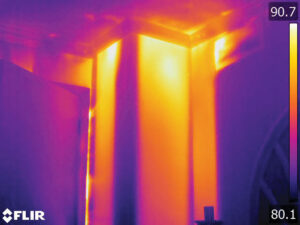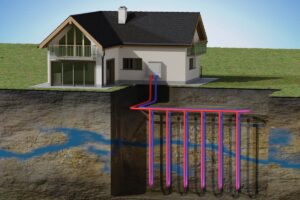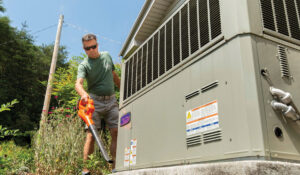
The nights are getting cooler and the leaves on the trees are starting to turn colors. Is your home ready for old man winter? Or, are you wondering where the best place is to start making your home more comfortable and save money on your energy bills?
Typically, the best place to start is in the attic. In the winter, the greatest heat loss is usually to the attic – and it’s not all about insulation. Although cellulose insulation far outperforms all other attic insulation on the market, it plays a very important part in keeping heat in the home. However, it alone does not make an attic energy efficient and it’s not just because heat rises.
You’ve seen me write about the thermal and pressure boundaries of the home. Just to be clear, from an energy perspective, we do not care about the interior walls, floors or ceilings. All energy geeks are concerned about is the part of the home where one side is the warm interior and the other side is the cold outside. Between these two distinctly different environments is where the thermal and pressure boundaries should be located.
The pressure boundary for the attic is usually the drywall on the ceiling. This keeps the warm air, not the heat, from flowing up into the attic and the cold air from flowing down into the home. Typically, the attic has the greatest air leakage potential in the home. Air can flow into and out of an attic through all the cracks and holes in the attic floor every time an outside door is opened or closed. The home is momentarily pressurized or depressurized pushing air into or pulling air out of the attic. This is also where a lot of the dust in the home comes from. When you turn on your bath fan, range hood or clothes dryer a good amount of the air that is drawn into the home from the ventilation fans comes from the attic because this is where the biggest leaks are. This is why air sealing your attic floor is so important. Remember to always air seal, then insulate, or you will be just covering up the problems.
FYI – Air sealing the attic floor would be any place where the drywall has been penetrated, or the perimeter of the rooms. You do not need to spray foam over the top of the drywall; air cannot leak through the drywall, it goes around it.
The thermal boundary is the insulation above the drywall and in full direct contact with the drywall or pressure boundary. The thermal and pressure boundary must align. This means the insulation must be touching the drywall ceiling or it will be an insulation void and greatly reduce the R-value of the insulation. This is why batt insulation doesn’t work well in the attic.
Before weatherizing your attic, I would highly recommend getting a detailed plan together. List all of the projects that need to be done from the attic not related to weatherizing. Completed these projects before adding the insulation.
Important – If you have ducts in your attic be sure to air seal and insulate them prior to installing attic insulation. Duct leakage to the outside of the home can be a significant source of heat loss or heat gain, and Indoor Air Quality (IAQ) contaminates. Even when air is not being circulating through the ducts in the attic, this is still a source of air infiltration. Ducts can be leak tested similar to a blower door test to see how leaky they really are. Ducts can also be sealed without getting into the attic by using an aerosol duct sealing process called Aeroseal®.
There are five main areas of the attic we are concerned about before installing insulation:
Air seal the attic floor – top plates, fire stops, wire and plumbing penetrations and thermal bypasses.

Insulate chutes and wind-blocks in the eaves for attic ventilation and to stop the cold wind from blocking through the insulation.
Attic ventilation for moisture removal from the attic and to keep your attic cool in the summer. Don’t use powered attic fans.
Attic access is air tight and insulated with foam board with no fiberglass batts lying on top.
Make sure all exhaust fans are operating properly and ducted to outside – never into the attic.
Again, ALWAYS air seal then insulate.









